Purple plumes peeking out in the spring garden
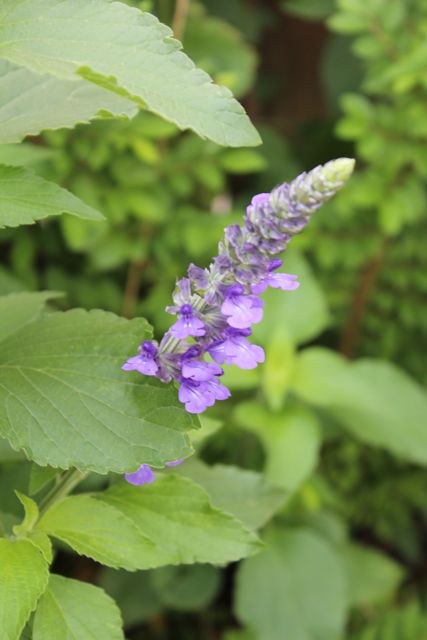 As the temperatures creep up to early summertime highs here in Central Texas , irises, salvias and other purple plumes are putting on a pageant in my garden.
As the temperatures creep up to early summertime highs here in Central Texas , irises, salvias and other purple plumes are putting on a pageant in my garden.
Maybe I like the purple and blue hues so much in my garden because they seem to cool off our scorching heat.
At least they give the impression that it’s cooler in the garden.
And because blue hues on the color wheel make things seem to recede, they also make my garden seem bigger.
One of my very favorites is Indigo Spires. It’s tall, deep purple blooms sway in the breeze and make a real statement.
Luckily for me, the salvias I’m collecting are safe from our hungry, grazing deer.
 This catmint was a new addition to my garden last spring and it’s been a great performer. It easily survived last summer and stayed evergreen all winter. No cats here in my garden, but I’d recommend this a a hardy Central Texas perennial.
This catmint was a new addition to my garden last spring and it’s been a great performer. It easily survived last summer and stayed evergreen all winter. No cats here in my garden, but I’d recommend this a a hardy Central Texas perennial.
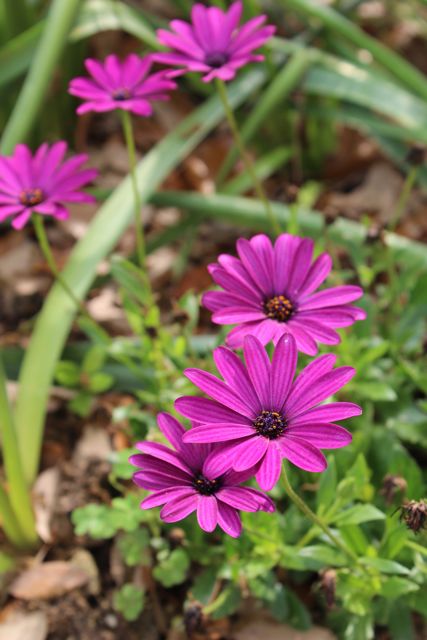
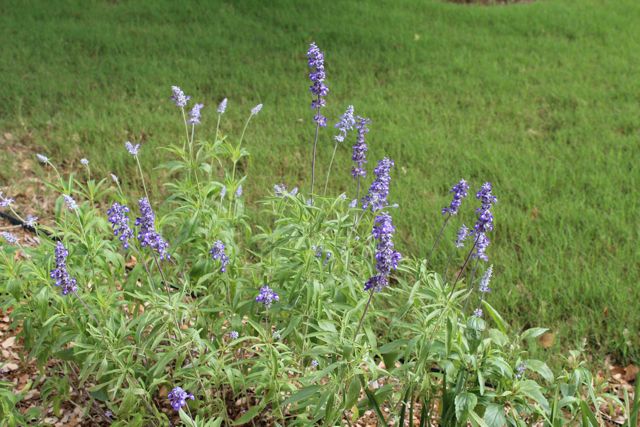 Mealy blue sage — which grows wild in the fields in Texas — seems very happy in my front garden and is spreading every year.
Mealy blue sage — which grows wild in the fields in Texas — seems very happy in my front garden and is spreading every year.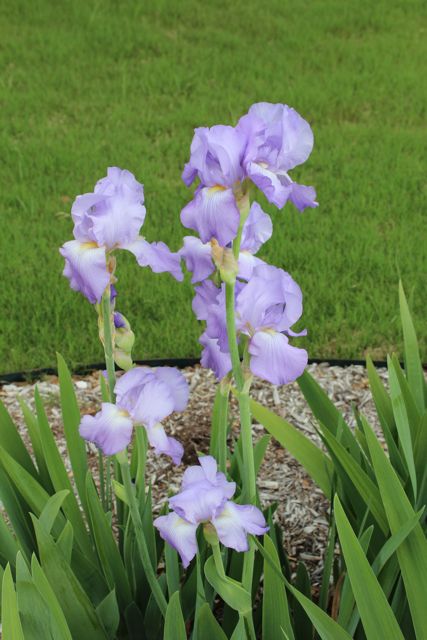 My pass-along irises, Amethyst Flame, from Pam of Digging, are still blooming and going strong after weeks.
My pass-along irises, Amethyst Flame, from Pam of Digging, are still blooming and going strong after weeks.
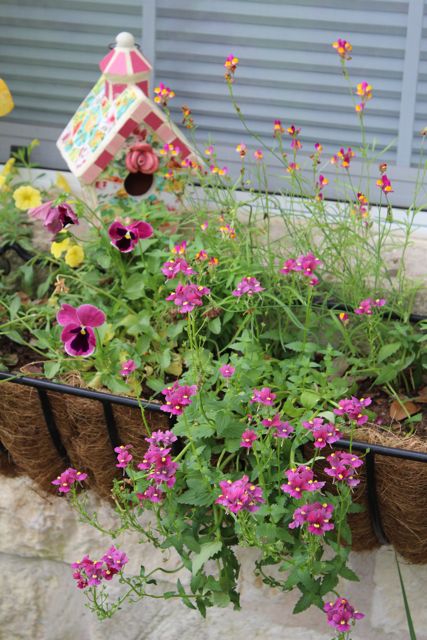 Little pink and purple pretties are mixed into this whimsical windowbox arrangement.
Little pink and purple pretties are mixed into this whimsical windowbox arrangement.
 My larkspur — from seeds passed along several years ago from Zanthan Gardens — are just beginning to bloom. I love that feathery foliage.
My larkspur — from seeds passed along several years ago from Zanthan Gardens — are just beginning to bloom. I love that feathery foliage.
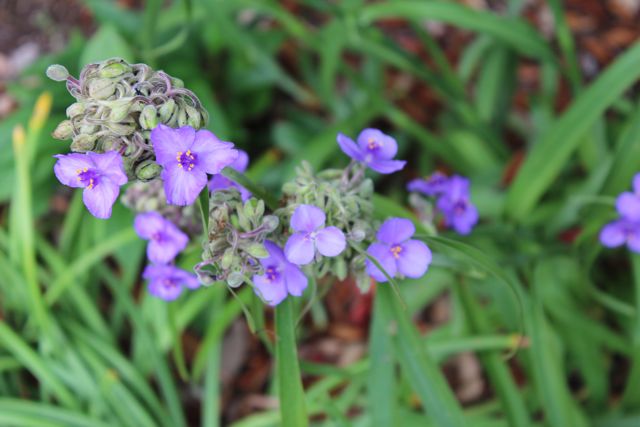 These tradescantia, or spiderwort, are finally spreading a little in the back bed. I hear they can be invasive, but there’s plenty of room for them, so I keep enouraging them to grow more!
These tradescantia, or spiderwort, are finally spreading a little in the back bed. I hear they can be invasive, but there’s plenty of room for them, so I keep enouraging them to grow more!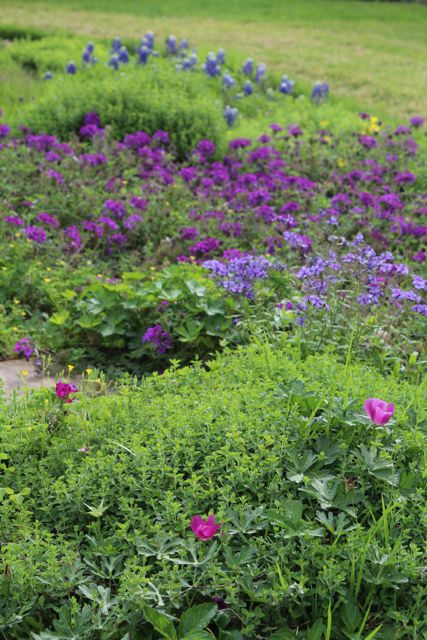 The rock path in the back has 4 or 5 different purple blooms intermingling among the Oklahoma flagstone, decomposed granite and river rock. Homestead verbena, 2 kinds of winecup and more all make great neighbors.
The rock path in the back has 4 or 5 different purple blooms intermingling among the Oklahoma flagstone, decomposed granite and river rock. Homestead verbena, 2 kinds of winecup and more all make great neighbors.
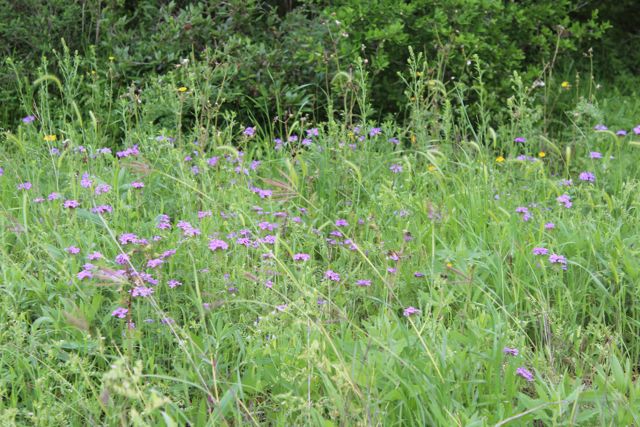 This is the easement beside our neighbor’s property – filled with wild native prairie verbena. It’s not in my garden, but I can see it from my garden … kinda like you can see Russia…oh, nevermind!
This is the easement beside our neighbor’s property – filled with wild native prairie verbena. It’s not in my garden, but I can see it from my garden … kinda like you can see Russia…oh, nevermind!
 While I lost some of the salvia ‘May night,’ the ones that survived last summer are going strong and attracting lots of bees.
While I lost some of the salvia ‘May night,’ the ones that survived last summer are going strong and attracting lots of bees.
